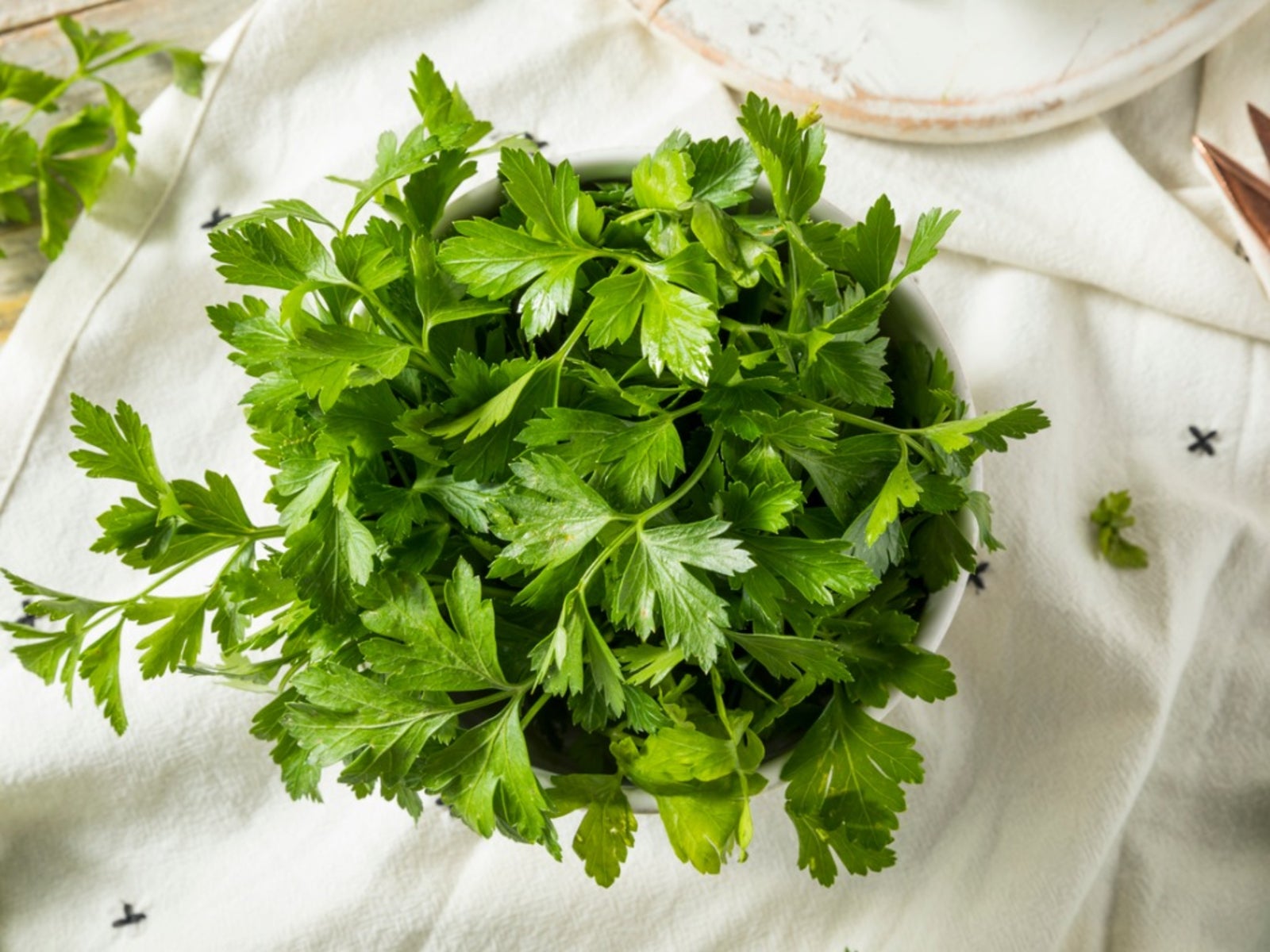Italian Flat Leaf Parsley: What Does Italian Parsley Look Like And How To Grow It


Italian flat leaf parsley (Petroselinum neapolitanum) may look unassuming but add it to soups and stews, stocks and salads, and you add a fresh flavor and color that makes the dish. Growing Italian parsley in the garden or in a window box will allow the home cook to harness the lively flavor of this plant. Try growing Italian parsley indoors as it does better than curly leaved parsley. You can also learn how to grow Italian parsley outside in the kitchen garden.
What Does Italian Parsley Look Like?
Even the foodie with moderate herbal knowledge may wonder, what does Italian parsley look like? This 6 to 12 inch (15-31 cm.) tall plant has sturdy, slender stems topped with flat, deeply divided leaves. The leaves are soft and pliable and useful whole or chopped. In fact, the entire stem is good cut up and used in chicken salad or other places where celery or some crunchy vegetable would be appropriate. You can even use Italian flat leaf parsley roots in salads or sautés.
Types of Italian Parsley Herbs
There are several cultivars of Italian flat leaf parsley:
- Gigante Catalogno is a large leaved variety.
- Italian Dark Green has deep green leaves with a strong flavor and Italian plain leaf, which is the fastest growing type.
- Giant of Naples is another larger variety.
Whichever variety you choose, know the proper conditions for growing Italian parsley and you'll have a biennial herb that is useful for years.
How to Grow Italian Parsley
Italian parsley herbs require temperate conditions. They don't perform well in extremely hot areas and are prone to freezing back in cold climates. Choose a sunny site in well-draining soil with plenty of organic amendment. If you're planting several plants together, allow at least 18 inches (36 cm.) between them to prevent mildew from forming on the leaves. Potted plants thrive in a window with indirect light, no drafts, and comfortable household temperatures.
Growing Italian Parsley from Seed
Italian parsley is started outdoors after all danger of frost has passed, or inside six to eight weeks before the last expected frost. Use a fine mixture of potting soil, peat moss, and sand. Cover with 1/8 inch (3 mm.) fine dusting of soil, and keep the seeds misted and lightly moist. Thin seedlings to 10 to 12 inches (25-31 cm.) apart.
Care of Italian Flat Leaf Parsley
Allow the soil to dry out partially between watering. Water deeply approximately once per week and allow excess moisture to drain out. Fertilize plants in the ground in early spring with a balanced fertilizer. Potted plants may be fertilized monthly with a half dilution of liquid plant food. Trim what you need, taking the stems back to the core of the plant. If your plant is skinny and spindly, try moving it to a brighter area. Cut off any blooms as they occur, as this will cause the plant to seed and leaf production to diminish.
Gardening tips, videos, info and more delivered right to your inbox!
Sign up for the Gardening Know How newsletter today and receive a free copy of our e-book "How to Grow Delicious Tomatoes".

Bonnie Grant is a professional landscaper with a Certification in Urban Gardening. She has been gardening and writing for 15 years. A former professional chef, she has a passion for edible landscaping.
-
 4 Superfast Composting Methods: Turn Waste Into Garden Gold In 30 Days Or Less
4 Superfast Composting Methods: Turn Waste Into Garden Gold In 30 Days Or LessTry the fastest composting methods to turbocharge your pile and transform kitchen scraps and garden waste into finished compost in just a few weeks.
By Mary Ellen Ellis
-
 Best Spider Plant Soil – Complete Soil Guide And Expert Tips For Keeping Plants Happy
Best Spider Plant Soil – Complete Soil Guide And Expert Tips For Keeping Plants HappySpider plants are fun and easy plants to grow, but what is the best soil for a spider plant? Selecting the right soil is important so they can thrive.
By Bonnie L. Grant